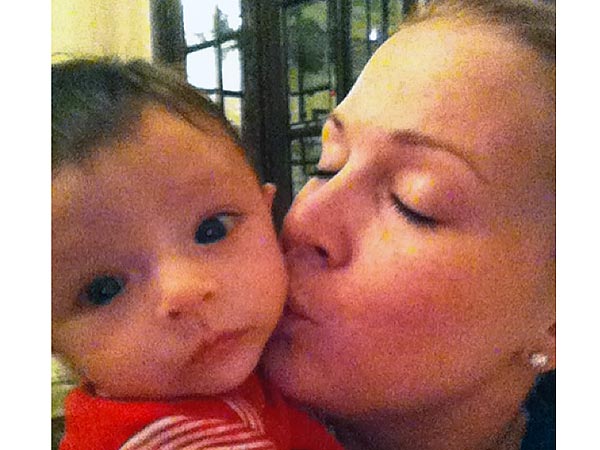BEIRUT (Reuters) - Syrian President Bashar al-Assad rejected peace talks with his enemies on Sunday in a defiant speech that his opponents described as a renewed declaration of war.
Although the speech was billed as the unveiling of a new peace plan, Assad offered no concessions and even appeared to harden many of his positions. He rallied Syrians for "a war to defend the nation" and disparaged the prospect of negotiations.
"We do not reject political dialogue ... but with whom should we hold a dialogue? With extremists who don't believe in any language but killing and terrorism?" Assad asked supporters who packed Damascus Opera House for his first speech since June.
"Should we speak to gangs recruited abroad that follow the orders of foreigners? Should we have official dialogue with a puppet made by the West, which has scripted its lines?"
It was his first public speech to an audience in six months. Since the last, rebels have reached the capital's outskirts.
George Sabra, vice president of the opposition National Coalition, told Reuters the peace plan Assad put at the heart of his speech did "not even deserve to be called an initiative":
"We should see it rather as a declaration that he will continue his war against the Syrian people," he said.
"The appropriate response is to continue to resist this unacceptable regime and for the Free Syrian Army to continue its work in liberating Syria until every inch of land is free."
The speech was seen by many as a response to U.N. mediator Lakhdar Brahimi, who has been meeting U.S. and Russian officials to try to narrow differences between Washington and Moscow over a peace plan. Brahimi also met Assad in Syria late last month.
"Lakhdar Brahimi must feel foolish after that Assad speech, where his diplomacy is dismissed as intolerable intervention," said Rana Kabbani, a Syrian analyst who supports the opposition.
The United States, European Union, Turkey and most Arab states have called on Assad to quit. Russia, which sells arms to and leases a naval base from Syria, says it backs a transition of power but that Assad's departure should not be a precondition for any talks.
REPETITIONS
Assad's foreign foes were scornful and dismissive of the speech: "His remarks are just repetitions of what he's said all along," said Turkish Foreign Minister Ahmet Davutoglu.
"It seems he's locked himself up in a room and only reads the intelligence reports presented to him."
British Foreign Secretary William Hague said "empty promises of reform fool no one". In a Twitter message, he added: "Death, violence and oppression engulfing Syria are of his own making."
EU foreign affairs chief Catherine Ashton said Brussels would "look carefully if there is anything new in the speech, but we maintain our position that Assad has to step aside and allow for a political transition".
The 47-year-old Assad, tall and mustachioed, in a business suit and tie, spoke confidently for about an hour before a crowd of cheering loyalists, who occasionally interrupted him to shout and applaud, at one point raising their fists and chanting: "With blood and soul we sacrifice for you, oh Bashar!"
At the end of the speech, supporters rushed to the stage, mobbing him and shouting: "God, Syria and Bashar is enough!" as a smiling president waved and was escorted from the hall past a backdrop showing a Syrian flag made of pictures of people whom state television described as "martyrs" of the conflict so far.
"We are now in a state of war in every sense of the word," Assad said in the speech, broadcast on Syrian state television. "This war targets Syria using a handful of Syrians and many foreigners. Thus, this is a war to defend the nation."
Independent media are largely barred from Damascus.
Giving the speech in the opera house, in a part of central Damascus that has been hit by rebel attacks, could be intended as a show of strength by a leader whose public appearances have grown rarer as the rebellion has gathered force.
Critics saw irony in the venue: "Assad speech appropriately made in Opera House!" tweeted Rami Khouri, a commentator for Lebanon's Daily Star newspaper. "It was operatic in its other-worldly fantasy, unrelated to realities outside the building."
DEATHS
The United Nations says 60,000 people have been killed in the civil war, the longest and bloodiest of the conflicts to emerge in two years of revolts in Arab states.
Rebels now control much of the north and east of the country, a crescent of suburbs on the outskirts of the capital and the main border crossings with Turkey in the north.
But Assad's forces are still firmly in control of most of the densely populated southwest, the main north-south highway and the Mediterranean coast. The army also holds military bases throughout the country from which its helicopters and jets can strike rebel-held areas with impunity, making it impossible for the insurgents to consolidate their grip on territory they hold.
Assad, an eye doctor, has ruled since 2000, succeeding his late father Hafez, who had seized power in a 1970 coup.
The rebels are drawn mainly from Syria's Sunni Muslim majority, while Assad, a member of the Alawite sect related to Shi'ite Islam, is supported by some members of religious minorities who fear retribution if he falls.
The conflict has heightened confrontation in the Middle East between Shi'ite Iran and Sunni Arab rulers, particularly those in the Gulf who are allied with the West against Tehran.
The plan unveiled in Sunday's speech could hardly have been better designed to ensure its rejection by the opposition. Among its proposals: rebels would first be expected to halt operations before the army would cease fire, a certain non-starter.
Assad also repeatedly emphasized rebel links to al Qaeda and other Sunni Islamist radicals. Washington has also labeled one of the main rebel groups a terrorist organization and says it is linked to the network founded by Osama bin Laden.
Diplomacy has been largely irrelevant so far in the conflict, with Moscow vetoing U.N. resolutions against Assad.
U.N. mediator Brahimi has been trying to bridge the gap, meeting senior U.S. and Russian officials to discuss his own peace proposal, which does not explicitly mention Assad's fate.
National Coalition spokesman Walid Bunni said Assad's speech appeared timed to prevent a breakthrough in those talks, by taking a position that could not be reconciled with diplomacy.
"The talk by Brahimi and others that there could be a type of political solution being worked out has prompted him to come out and tell the others 'I won't accept a solution'," Bunni said, adding that Assad feared any deal would mean his downfall.
(Additional reporting by Suleiman al-Khalidi in Amman, Gulsen Solaker in Ankara and Tim Castle in London; Writing by Peter Graff; Editing by Alastair Macdonald)











